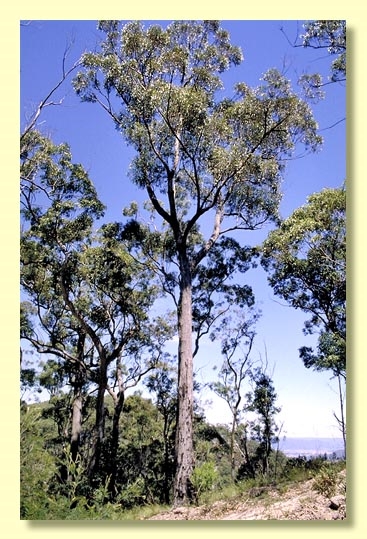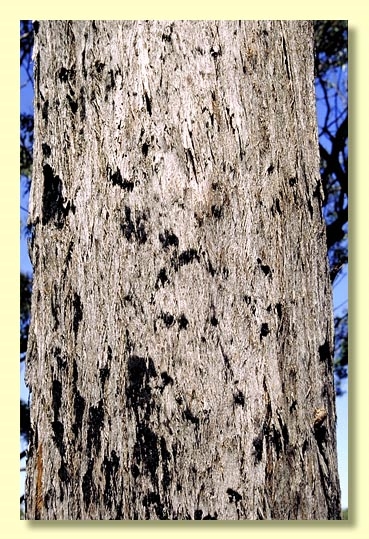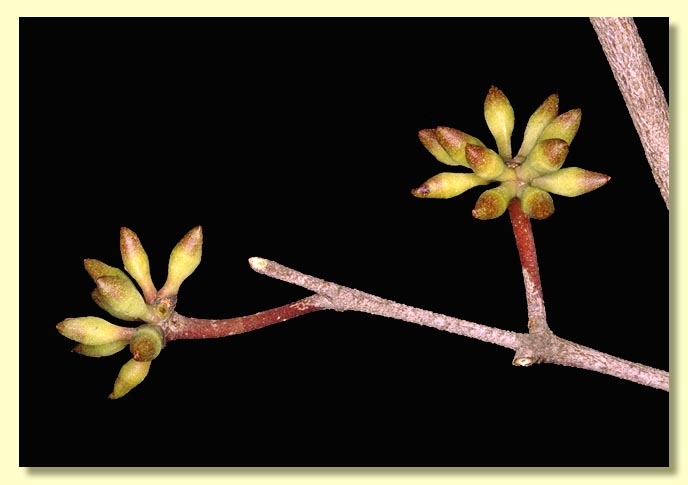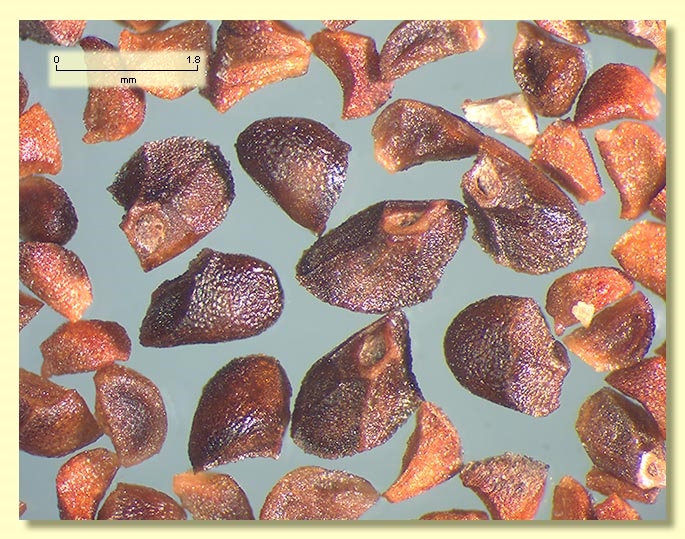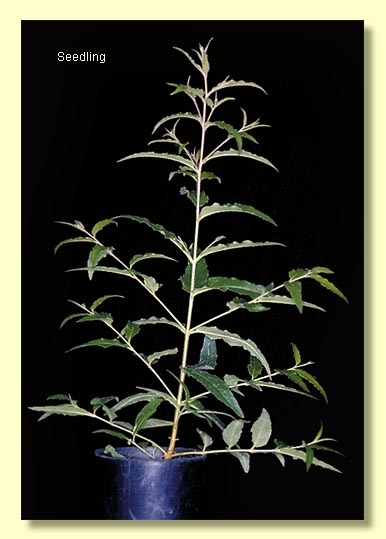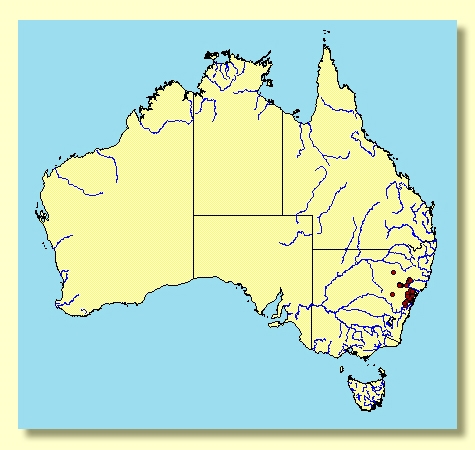Euclid - Online edition
Eucalyptus sparsifolia
Eucalyptus | Eucalyptus | Capillulus | Pachyphloius
T: Glenore to Canoe Grounds, NSW, 14 Oct. 1927, W.F.Blakely s.n.; syn: NSW Maroota, NSW, Sept. 1927, W.F.Blakely s.n.; syn: NSW; Castlereagh State Forest, Windsor, NSW, Jan. 1932, W.F.Blakely s.n.; syn: NSW.
Stringybark to ca 5 cm diameter branches, furrowed, grey over reddish brown.
Juvenile growth (coppice or field seedlings to 50 cm): stem rounded in cross-section, scabrid; juvenile leaves opposite for ca ?6 nodes, sessile, linear, 2–5 cm long, 0.2–0.4 cm wide, base rounded or tapering, apex pointed, discolorous, glossy, green; growing tips, stems, petioles and at least the leaf margins stellate-scabrid for many nodes.
Adult leaves alternate, petioles 1–1.8 cm long; blade falcate or narrowly lanceolate, 7–13.5 cm long, 1–2.2 cm wide, base usually oblique, concolorous, maturing glossy, green, side-veins acute, sparsely reticulate, intramarginal vein parallel to and close to or remote from the margin, oil glands island, irregular, numerous.
Inflorescence axillary, unbranched, peduncles 0.5–1.5 cm long, buds in umbels of 9 to 15, pedicels 0.1–0.3 cm long. Mature buds fusiform to narrowly ovoid, 0.4–0.6 cm long, 0.2 cm wide, green to yellow, smooth, scar absent, operculum usually beaked, stamens irregularly flexed, anthers reniform to cordate, versatile, dorsifixed, dehiscing by confluent slits, style long, stigma tapered, locules 3 or 4, the placentae each with 2 vertical ovule rows. Flowers white.
Fruit sessile or on pedicels to 0.2 cm long, truncate-globose, 0.3–0.5 cm long, 0.5–0.7 cm wide, disc usually slightly raised and oblique, or level, valves 3 or 4, near rim level or enclosed.
Seeds brown or reddish brown, 1.2–2 mm long, pyramidal or obliquely pyramidal, dorsal surface smooth, hilum terminal.
Cultivated seedlings (measured at ca node 10): cotyledons reniform; stems rounded in cross-section, stellate-hairy; leaves sessile, opposite for 5 to 10 nodes then alternate, linear to narrowly lanceolate, 2–5 cm long, 0.2–0.5 cm wide, base rounded to tapering, margin irregular, apex pointed, discolorous, mid-green above, paler beneath, moderately stellate-hairy.
Flowering has been recorded in June, September and December.
Small to medium-sized tree occurring from the Pilliga Scrub south through the northern parts of the Central Tablelands and Hunter Valley to west of Sydney. Eucalyptus sparsifolia has stringy bark to the middle-sized branches then smooth bark, a green crown of narrow leaves, small pedicellate fusiform buds usually with a beak, and truncate-globose fruit only 0.5–0.7 cm wide. Juvenile leaves are linear being only 0.2–0.4 cm wide and are hairy/scabrid for many nodes.
E. sparsifolia is a relatively narrow-leaved stringybark, formerly placed under E. oblonga which included a wide range of leaf widths, the broader forms of which are now included in E. globoidea. The combination of very narrow juvenile leaves, stalked and beaked buds, and small fruit distinguish E. sparsifolia from other stringybark species over its natural range. Eucalyptus sparsifolia is very similar to E. tenella, a smaller tree that has generally wider juvenile leaves (the range is 0.3–1.5 cm so there is some overlap) and shorter peduncles (but again with some overlap in dimensions).
MORE ABOUT STRINGYBARKS

